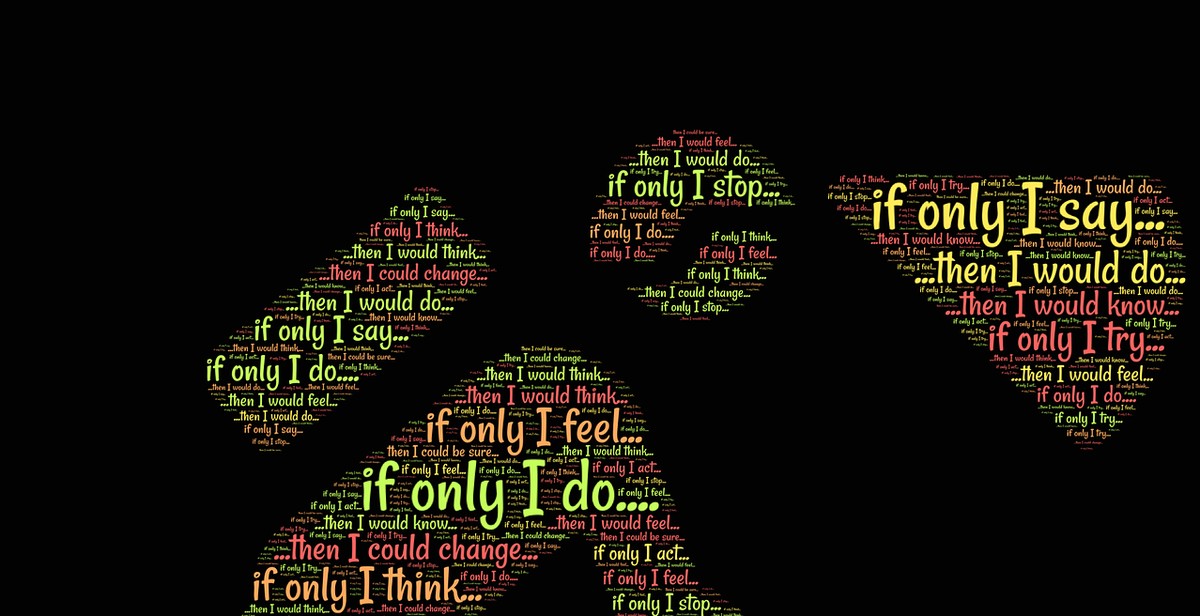Understanding Self-Harm: From Causes to Prevention Strategies
Self-harm is a sensitive topic that is often misunderstood and stigmatized. It refers to the act of intentionally inflicting harm or injury to oneself as a way of coping with emotional pain or distress. It can take many forms, including cutting, burning, hitting, or scratching oneself, and can lead to serious physical and psychological consequences.
In this article, I will explore the causes of self-harm, the signs and symptoms to look out for, and the various prevention strategies that can help individuals overcome this harmful behavior. As someone who has struggled with self-harm in the past, I understand the importance of shedding light on this issue and providing helpful resources for those who may be experiencing it.
The Causes of Self-Harm
Self-harm is often a coping mechanism used to deal with intense emotional pain or distress. It can be triggered by a variety of factors, such as:
- Depression or anxiety
- History of trauma or abuse
- Low self-esteem or self-worth
- Feeling out of control or hopeless
- Pressure to conform to societal norms or expectations
Understanding the underlying causes of self-harm is crucial in developing effective prevention strategies.
What is Self-Harm?
Self-harm, also known as self-injury or self-mutilation, is the act of intentionally causing harm to one’s own body. It is often a coping mechanism for individuals who are experiencing intense emotional pain or distress.
Defining Self-Harm
Self-harm is a complex behavior that can take many forms. It can involve cutting, burning, hitting, scratching, or otherwise injuring oneself. Some individuals may engage in self-harm by ingesting harmful substances or engaging in risky behaviors.
Self-harm is not a suicidal act, although it may be a risk factor for suicide. Individuals who self-harm are often seeking relief from emotional pain, and may feel a sense of control or release from the act.
Types of Self-Harm
There are many different types of self-harm, and individuals may engage in multiple forms of self-harm. Some common types of self-harm include:
- Cutting: Using a sharp object to make cuts or scratches on the skin.
- Burning: Using heat sources such as matches, lighters, or cigarettes to burn the skin.
- Hitting: Punching or hitting oneself or objects in a way that causes injury.
- Scratching: Using fingernails or other objects to scratch the skin.
- Ingesting harmful substances: Consuming drugs or other toxic substances in a way that causes harm to the body.
- Risky behaviors: Engaging in activities that are dangerous or potentially harmful, such as driving recklessly or jumping from high places.
It is important to note that self-harm is not a healthy or effective way to cope with emotional pain. There are many resources available to individuals who struggle with self-harm, including therapy, support groups, and medication.
| Important Points |
|---|
| Self-harm is the act of intentionally causing harm to one’s own body as a coping mechanism for emotional distress. |
| Self-harm is not a suicidal act, although it may be a risk factor for suicide. |
| Common types of self-harm include cutting, burning, hitting, scratching, ingesting harmful substances, and engaging in risky behaviors. |
| Self-harm is not a healthy or effective way to cope with emotional pain and there are many resources available for individuals who struggle with self-harm. |
Causes of Self-Harm
Self-harm is a complex and multifaceted behavior that can stem from a variety of underlying issues. Understanding the root causes of self-harm is crucial in developing effective prevention strategies and treatment plans. Some of the most common causes of self-harm include:
Mental Health Disorders
Individuals with mental health disorders such as depression, anxiety, borderline personality disorder, and post-traumatic stress disorder (PTSD) are at an increased risk of engaging in self-harm behaviors. These disorders can cause individuals to feel overwhelmed, hopeless, and out of control, leading them to turn to self-harm as a coping mechanism.
Trauma and Abuse
Experiencing trauma or abuse, whether physical, emotional, or sexual, can lead to feelings of shame, guilt, and worthlessness. These feelings can be overwhelming and difficult to cope with, leading individuals to engage in self-harm as a way of coping with their emotions.
Family and Relationship Issues
Family and relationship issues, such as a history of neglect or abuse, conflict with loved ones, or feeling isolated or alone, can contribute to self-harm behaviors. Individuals may turn to self-harm as a way to cope with these issues and feel a sense of control over their lives.
Social and Cultural Factors
Social and cultural factors, such as peer pressure, societal expectations, and cultural norms, can also contribute to self-harm behaviors. For example, individuals may feel pressure to conform to a certain body image or engage in risky behaviors with their peers, leading them to engage in self-harm as a way of coping with these pressures.
It is important to note that self-harm is a complex behavior that is often influenced by multiple factors. Identifying the root causes of self-harm requires a thorough assessment of an individual’s mental health history, trauma history, and current social and cultural context.
| Causes of Self-Harm | Description |
|---|---|
| Mental Health Disorders | Individuals with mental health disorders such as depression, anxiety, borderline personality disorder, and post-traumatic stress disorder (PTSD) are at an increased risk of engaging in self-harm behaviors. |
| Trauma and Abuse | Experiencing trauma or abuse, whether physical, emotional, or sexual, can lead to feelings of shame, guilt, and worthlessness. |
| Family and Relationship Issues | Family and relationship issues, such as a history of neglect or abuse, conflict with loved ones, or feeling isolated or alone, can contribute to self-harm behaviors. |
| Social and Cultural Factors | Social and cultural factors, such as peer pressure, societal expectations, and cultural norms, can also contribute to self-harm behaviors. |

Signs and Symptoms of Self-Harm
Self-harm, also known as self-injury, is a serious mental health condition that can have long-lasting physical and emotional effects. It is important to recognize the signs and symptoms of self-harm in order to seek help and support for individuals who may be struggling with this issue.
Physical Signs of Self-Harm
Self-harm often involves intentional injury to the body, and there are physical signs that may indicate that someone is engaging in this behavior. Some common physical signs of self-harm include:
- Cuts, bruises, burns, or other unexplained injuries
- Wearing long sleeves or pants even in warm weather to hide injuries
- Scars, often in patterns on the arms, legs, or stomach
- Frequent accidents or injuries that seem suspicious or unlikely
- Presence of sharp objects like razors, scissors, or knives in personal items or surroundings
Emotional and Behavioral Signs of Self-Harm
Self-harm is often a coping mechanism for individuals who are struggling with emotional pain or stress. There are emotional and behavioral signs that may indicate that someone is engaging in self-harm. Some common emotional and behavioral signs of self-harm include:
- Isolation or withdrawal from friends and family
- Changes in eating or sleeping habits
- Low self-esteem or feelings of worthlessness
- Mood swings or intense emotions like anger, sadness, or anxiety
- Engaging in risky behaviors like drug use or unprotected sex
Getting Help for Self-Harm
If you or someone you know is exhibiting signs of self-harm, it is important to seek help. There are many resources available for individuals struggling with self-harm, including therapy, support groups, and crisis hotlines. With the right treatment and support, individuals can learn to manage their emotions in healthier ways and overcome self-harm behaviors.

Prevention Strategies
Self-harm is a complex issue that requires a comprehensive approach to prevention. Here are some effective strategies that can help individuals prevent self-harm:
Building a Support System
Building a support system can play a vital role in preventing self-harm. Friends, family, and loved ones can provide emotional support and help individuals cope with difficult emotions. It is essential to have a reliable and trustworthy support system that can help individuals in times of need. Joining support groups or online communities can also be helpful in creating a supportive environment.
Seeking Professional Help
Seeking professional help is a crucial step in preventing self-harm. Mental health professionals, such as therapists, psychologists, or psychiatrists, can provide individuals with the necessary tools and resources to cope with difficult emotions and prevent self-harm. Professional help can also help individuals address underlying issues that may contribute to self-harm.
Coping Mechanisms and Self-Care
Coping mechanisms and self-care strategies can help individuals manage stress and prevent self-harm. Engaging in activities such as exercise, meditation, or hobbies can provide individuals with a healthy outlet for their emotions. Practicing self-care, such as getting enough sleep, eating well, and taking breaks when needed, can also help individuals manage their emotions and prevent self-harm.
Creating a Safety Plan
Creating a safety plan can help individuals prevent self-harm during moments of distress. A safety plan should include a list of coping strategies, emergency contacts, and resources for professional help. It should also identify triggers and warning signs and provide individuals with steps to take when they experience these warning signs.
| Prevention Strategies | Description |
|---|---|
| Building a Support System | Friends, family, and loved ones can provide emotional support and help individuals cope with difficult emotions. |
| Seeking Professional Help | Mental health professionals can provide individuals with the necessary tools and resources to cope with difficult emotions and prevent self-harm. |
| Coping Mechanisms and Self-Care | Engaging in activities such as exercise, meditation, or hobbies can provide individuals with a healthy outlet for their emotions. Practicing self-care can also help individuals manage their emotions and prevent self-harm. |
| Creating a Safety Plan | A safety plan should include a list of coping strategies, emergency contacts, and resources for professional help. It should also identify triggers and warning signs and provide individuals with steps to take when they experience these warning signs. |
Conclusion
Self-harm is a complex and sensitive issue that requires understanding and empathy from society. It is important to recognize that self-harm is not a choice, but rather a coping mechanism for individuals who are struggling with emotional pain.
Through our exploration of the causes and prevention strategies of self-harm, it is clear that there is no one-size-fits-all solution. However, by addressing the underlying issues that lead to self-harm, such as mental illness and trauma, we can begin to make progress in preventing it.
Seeking Help
If you or someone you know is struggling with self-harm, it is important to seek help from a trained professional. There are numerous resources available, including hotlines, support groups, and therapy.
Breaking the Stigma
Breaking the stigma surrounding self-harm is crucial in creating a safe and supportive environment for those who are struggling. By increasing awareness and understanding, we can reduce the shame and isolation that often accompanies self-harm.
Continued Education
Continued education and research on self-harm is vital in developing effective prevention and intervention strategies. As a society, we must continue to prioritize mental health and wellness, and work towards creating a world where self-harm is no longer a prevalent issue.
Resources |
Hotlines |
|---|---|
|
|
Remember, self-harm is a serious issue that requires understanding and support. By breaking the stigma, seeking help, and continuing education, we can work towards creating a world where self-harm is no longer a prevalent issue.
